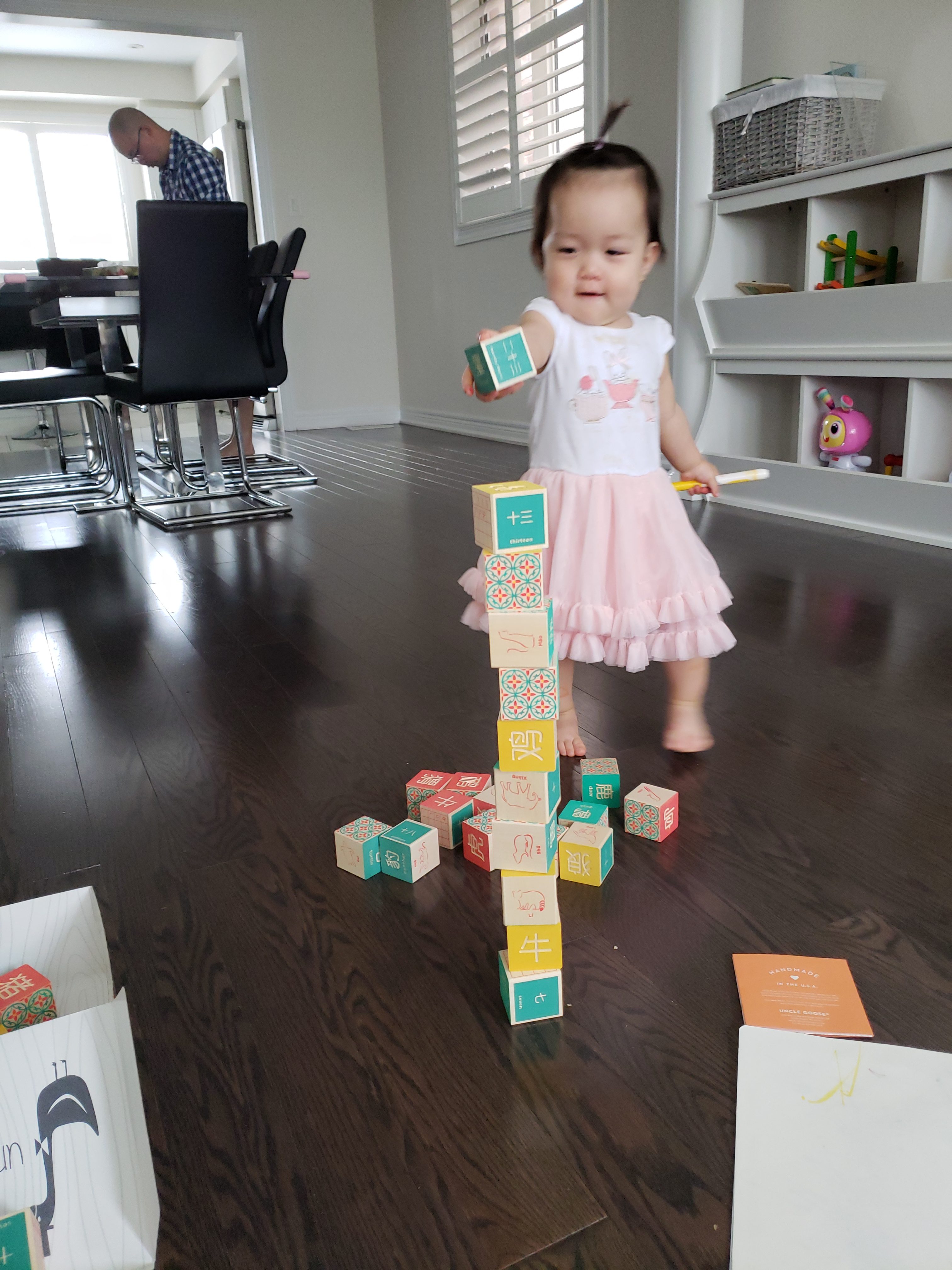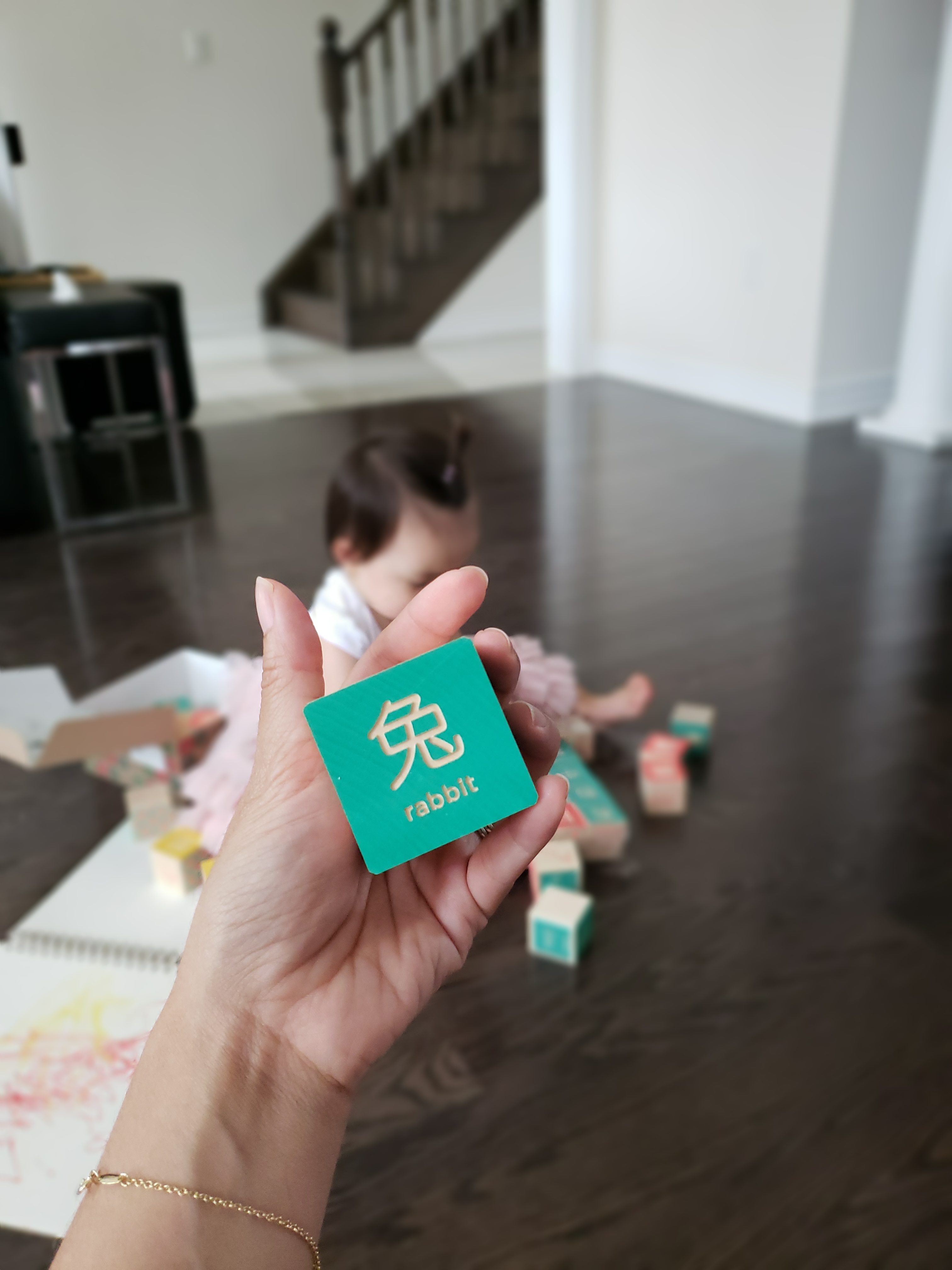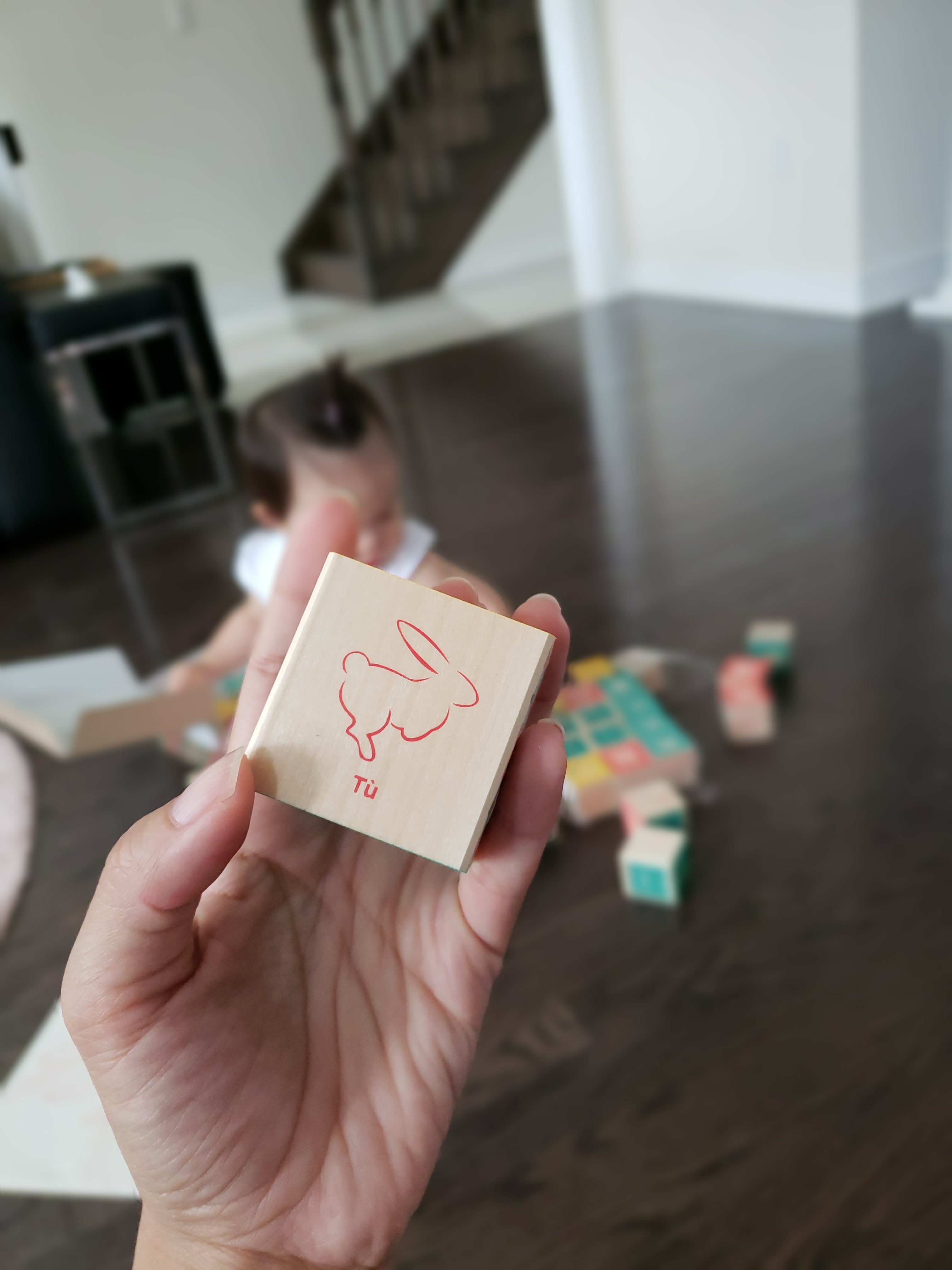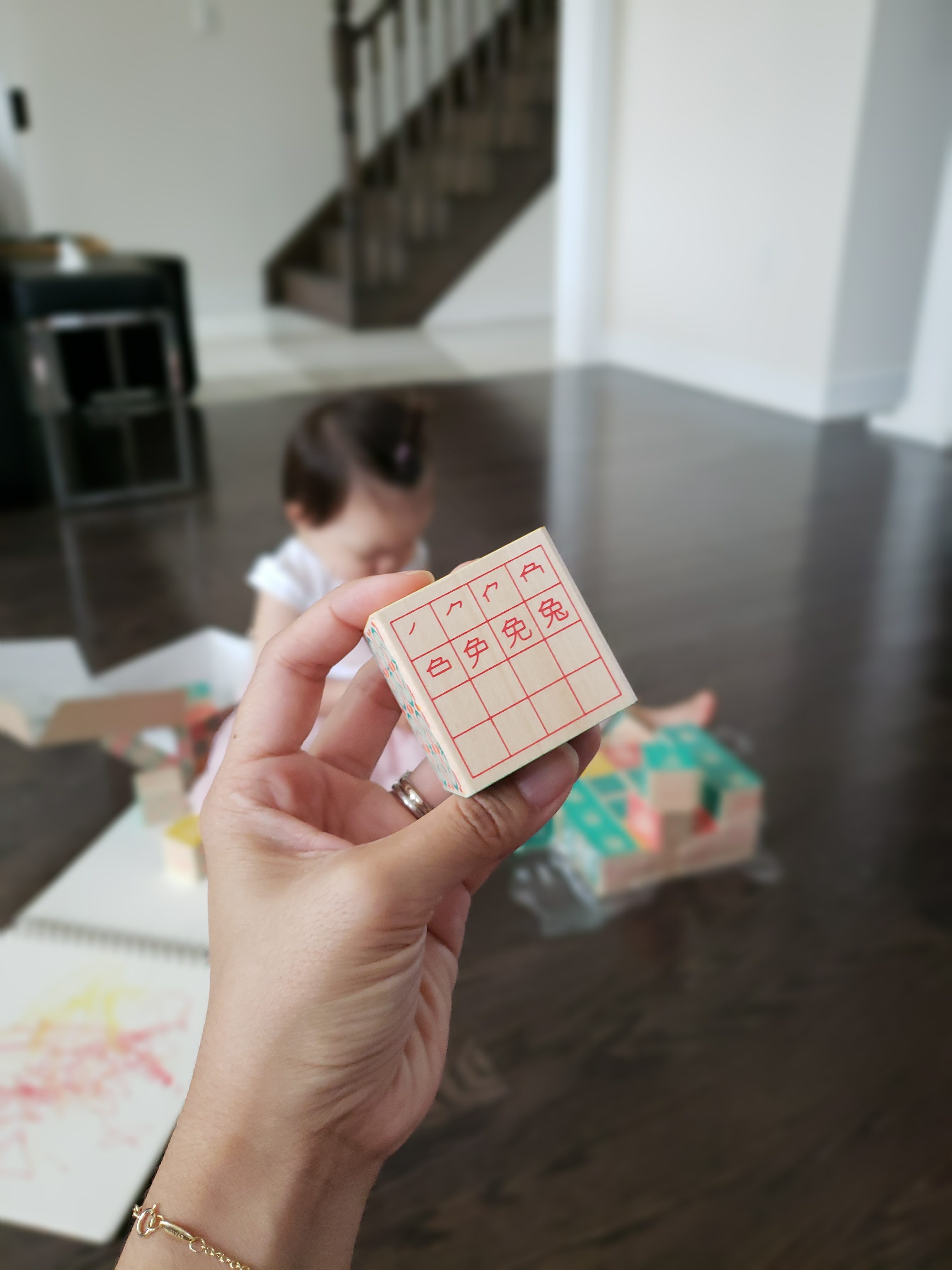One of my favourite resource to go to is this website, they have animals, fruits, numbers, colors everything you can think of! They are in simplified Chinese, so if you can’t read simplified Chinese, just Google Translate and save the traditional Chinese instead!
Free Printable
Free printable available here: http://www.semanda.com/printable.aspx
They have Animals, color, cities, drinks, food, electronics and so much more! You have to check them out.


Uncle Goose Blocks
I got these amazing blocks from West Coast Kids – but you can also buy them here via Amazon. When I saw these at the store I didn’t even think twice picking them up. Of course, she can’t read or really understand it yet, but I can see these blocks being useful when she’s a little bit older. But for now, she just likes to stack them!! Look how good she is at stacking now! Unfortunately, these only come in simplified Chinese. I’m going to have a hard time teaching her in simplified Chinese because even I can’t read them!




Oh! And for the nerdy parents who wants to start them young.. here’s a Periodic Table! You can get this one here.
Myths
Some parents actually discourage teaching their kids bilingual because they feel that it would lead to confusion and speech delays. But below, I will list out all the myths and the truth about them!
1. Growing up with more than one language confuses children.
so many parents are telling me that this will confuse the children and child would not be able to differentiate between them.
“From just days after birth, all infants can tell the difference between many languages,” says Barbara Zurer Pearson, author of Raising a Bilingual Child. She says this is especially true when the languages are quite different from each other – as different, for example, as French and Arabic.
“At that young age, infants generally still have trouble telling two very similar languages apart, like English from Dutch. But by about 6 months of age, they can do that too,” she says.
The confusion of the this myth is because of poor designed studies that makes parents drop their heritage language.
2. Raising a child to be bilingual leads to speech delays.
Some children raised bilingual do take a little longer to start talking than those raised in monolingual households. The delay is temporary, however, and according to experts, it’s not a general rule.
“Research indicates that bilingualism does not cause delays in either speech or language acquisition,” says Ellen Stubbe Kester, president of Bilinguistics, which offers bilingual speech-language services in Austin, Texas.
Even if your child has already been diagnosed with some kind of speech delay, raising him bilingual won’t make his speech any more delayed.
“Studies have found that children with language delays who are in dual language environments gain language at the same rate as those in monolingual environments,” says Kester.
3. Bilingual children end up mixing the two languages.
Mixing languages is both inevitable and harmless. But to some unfamiliar with bilingualism, it’s proof that the child can’t really tell the languages apart.
“Sometimes people do it because they don’t know a word they need in the language they’re speaking,” says Pearson. “Some people mix on purpose because they like the word or phrase in the other language better.”
Children model what they see and hear, so if your child lives in an environment in which mixing languages is the norm, expecting her not to do so is unrealistic
4. It’s too late to raise your child bilingual.
It’s never too late – or too early – to introduce your child to a second language.
“Learning a second language is easier for children under 10, and even easier for children under 5, compared with the much greater effort it takes adults,” says Pearson.
The optimal time, according to experts, seems to be from birth to 3 years – exactly when a child is learning his first language, and his mind is still open and flexible.
“We hear so much about the special ‘window of opportunity’ for young children to learn two languages that it can be discouraging to the older child,” says Pearson. “It’s true that it’s easier to start earlier, but people canlearn a second language even after the window has closed.”
5. Children are like sponges, and they’ll become bilingual without effort and in no time.
Although it’s easier for children to learn a new language the earlier they’re exposed to it, even then it doesn’t happen by osmosis. It’s unrealistic to expect your child to learn Spanish by watching countless episodes of Dora the Explorer on television.
Learning a language doesn’t have to be a chore. But introducing a second language to your children does require some kind of structure and, most important, consistency, whether it’s through day-to-day conversation or formal instruction. The idea is to expose them to language learning in meaningful and interesting ways that are connected to real life.
So hopefully you will consider raising your child bilingual too!

Thanks so much for reading,

Source: Baby Center




1 Comments
Comments are closed.